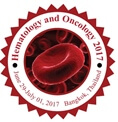Zareen Irshad
Pakistan
Title: Haemostatic Manifestations in Dengue and Clinical Outcome of the Patient
Biography
Biography: Zareen Irshad
Abstract
Background: Over the last few years dengue has become a major health problem in tropical and subtropical regions around the world. Dengue fever is an acute febrile disease caused by an arbrovirus in Flavivirus genus. Dengue viral infection is known to cause a wide spectrum of disease manifestations, from mild undifferentiated fever, classical dengue fever to dengue haemorrhagic fever (DHF)/ dengue shock syndrome (DSS). Haematological manifestations include thrombocytopenia, leucopenia, and deranged prothrombin time, activated partial thromboplastin time.
Objective: The study was aimed to find out frequency of haemostatic manifestations in dengue and clinical outcome of patients
Material and Methods:
Sample Size: 135
Study design: Descriptive study. Cross Sectional.
Place of study: The study was conducted in Pathology department at PNS Shifa, Karachi.
Inclusion criteria: The study was conducted on all patients of serologically proven dengue infection.
Results: A total of 135 patients were evaluated in the study. The mean age of the patients was 29 years (Range: 2 – 63years). Out of these patients, 111(82.22%) were male and 24(17.78%) were female patients. The most common haemostatic manifestations in dengue patients were thrombocytopenia in 111(82.2%) patients. Severe thrombocytopenia was observed in 9(6.7%) cases, moderate thrombocytopenia was found in 30(22.2%) cases and mild thrombocytopenia was observed in 72(53.3%) cases. Bleeding time more than 9 minutes was observed only in 1 case. Prolonged prothrombin time observed in 8(5.6%) cases and deranged APTT was observed in 57(42.2%) cases. Increased level of fibrin degradation product (D-dimer) was in 30(22.2%) cases. Out of 135 patients, 2(1.48%) were expired and 133(98.52%) were survived and discharged
Conclusion: Dengue continues to be a significant health problem in Pakistan. It is extremely important to implement and maintain an effective, sustainable and community based disease prevention program.

